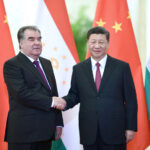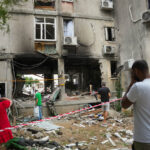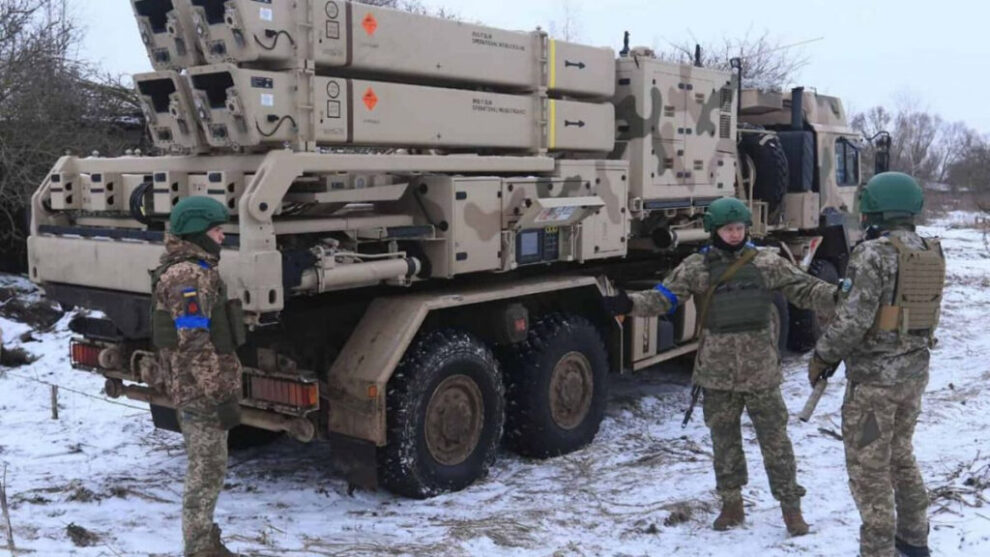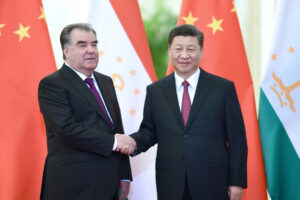Russia is likely preparing another campaign to attack Ukrainian energy infrastructure. Can our air defense systems withstand new strikes this winter? Read below in the material by RBC-Ukraine.
During the preparation of the material, publications by CSIS, IISS, Defense Express, AP, and The Washington Post were used, along with interviews with representatives of intelligence agencies on the condition of anonymity, comments from the spokesperson of the Air Force Command, Yurii Ihnat, as well as military experts Ivan Kyrychevskyi and Kostiantyn Kryvolap.
For several months in a row, government representatives have been requesting additional air defense systems from partners to defend against Russian missiles and drones. Data from both Ukrainian and foreign intelligence indicate that Moscow will again focus on targeting our energy infrastructure this year. Given that the heating season is already starting in cities across the country, it is likely that a new campaign of Russian terrorist attacks should be expected in the coming weeks.
When the Kremlin started targeting our energy facilities a year ago, Western analysts predicted an apocalyptic scenario for Ukraine. Experts from the Royal United Services Institute (RUSI) warned of the threat of bombardment similar to what occurred in Syria if the West did not strengthen our air defense. The Kremlin’s plan last fall and winter essentially failed, as the enemy significantly reduced its missile arsenal without completely disabling Ukraine. However, it would be premature to assume that Moscow’s plan will also end without results this time.
How the Ukrainian air defense has evolved
Our air defense at the time of the Russian invasion primarily consisted of systems inherited from the Soviet Union. This included long and medium-range systems such as the S-300 and Buk-M1, as well as the Osa, Tor, S-125, and ZSU-23-4 Shilka systems.
Starting in the spring, Ukraine began receiving thousands of short-range air defense systems from allies, including Stinger, Starstreak, Mistral, and Soviet-era Strela systems, with some later receiving Gepard and Stormer systems (essentially wheeled Starstreak). Even with this additional armament, Ukraine could only intercept no more than 30% of enemy targets, which remained the case until October 2022, when Moscow initiated the first attacks on our energy infrastructure.
Since then, allies have been supplying Western air defense systems to Ukraine in batches. This includes medium-range systems such as German Iris-T, Norwegian NASAMS, and American HAWK, significantly enhancing our ability to counter Russian missiles and drones. Additionally, Ukraine received additional short-range air defense systems like the Italian-Swiss Aspide (Spada/Skyguard), French Crotale, German Skynex, and American Avenger (essentially a wheeled Stinger). There are also various MANPADS, anti-aircraft guns, and artillery systems like the Swedish RBS 70 and Bofors L70, which assist in countering enemy drones.
A significant turning point was the transfer of Patriot long-range air defense systems to Ukraine, allowing our military to target ballistic and aeroballistic targets since May this year, along with a similar Italian-French SAMP/T (Mamba) system.

Since October of last year, when Western systems started arriving, the monthly rate of Russian aerial target interceptions did not drop below 50%. In April and May of this year, it was close to 90%. If we consider the latest statistics, in September, the Ukrainian Air Force managed to intercept nearly 79% of drones and 75% of all missiles launched against us.
However, the intense fall and winter campaign had consequences for both Russia and Ukraine. In April of this year, leaked Pentagon documents revealed that Ukraine was running out of Soviet-era anti-aircraft missiles for S-300 and Buk-M1 air defense systems. This shortage has been confirmed by Ukraine’s military and political leadership. According to the Air Force Command spokesperson, Yurii Ihnat, there is a serious deficit of anti-aircraft missiles for Soviet-era systems and the necessary spare parts.
“Based on the assessments provided by Western analysts, as of the summer of this year, we had this problem. We have a lot of launchers for Soviet-era systems, but finding missiles for them worldwide is challenging, as the main manufacturer is the Russian Federation. And there are no more Soviet anti-aircraft missile systems anywhere in the world. So, despite the quality improvement in our air defense, the problem of a shortage of Soviet-era anti-aircraft missiles remains,” explains Ivan Kyrychevskyi, an expert from the Defense Express Media and Consulting Company.
In the same Pentagon documents, it was mentioned that the United States plans to launch the FrankenSAM project to improve the condition of the Ukrainian air defense. Recently, Western media outlets revealed its details. American and Ukrainian engineers managed to adapt the Buk missile systems for use with American RIM-7 missiles. As part of this project, experts were also able to create an improvised anti-aircraft missile system for AIM-9M Sidewinder missiles. These solutions are likely to somewhat enhance the state of the Ukrainian air defense, but they probably won’t be a panacea. It is still unknown if there is a similar plan for the S-300 complexes.
The problem of a deficit of Soviet-era anti-aircraft missiles is acute because the S-300 and Buk-M1 systems are still the backbone of the Ukrainian air defense. According to the International Institute for Strategic Studies (IISS), which publishes the annual review The Military Balance, at the time of the Russian invasion, Ukraine had approximately 250 launchers of various S-300 modifications and an estimated 70-80 launchers for the Buk-M1 system.
Since then, according to Oryx’s calculations, Russia has managed to destroy only 66 S-300 launchers and 15 Buk launchers. These are just the data that have been confirmed through the study of photos and videos, but they provide an approximate picture of the situation.
“They are gradually being replaced, and they have been integrated into a comprehensive situational awareness system. We used to be the line of defense that protected Moscow, so we had the largest aviation fleet in Europe and a very powerful air defense system. However, our main problem is not the number of S-300s or Buks, but the missiles,” agrees aviation expert and former engineer at the Antonov Design Bureau, Kostiantyn Kryvolap.
What challenges remain
When looking at the diverse range of software systems available to us, it may give the impression that there are enough of them to replace the Soviet complexes. However, this is a somewhat misleading impression. For comparison, our Western allies have promised to supply us with nearly 11 NASAMS (air defense systems, each consisting of several launchers): 8 from the USA, 2 units (which is not a full battery) from Norway, and Canada was planning to provide one more. As of now, we only know about the transfer of two batteries from the USA and a few launchers from Lithuania. It’s understandable that some deliveries may be happening secretly. However, according to reports, our military has not received all of the promised systems. Some air defense systems, according to the contract, are supposed to be manufactured by the end of August next year.
Spain has provided us with 6 HAWK launchers and plans to supply as many more. This is enough for two batteries. The USA has also provided Ukraine with 2 batteries of these systems.
Regarding the Iris-T system, Germany decided to supply us with 8 Iris-T SLM (medium-range) and 12 in the SLS version (short-range). According to the latest information from the German government, Berlin has only delivered 2 Iris-T SLM systems and 2 launchers for Iris-T SLS to Ukraine so far. The delivery of the third Iris-T SLM system was previously announced for October of this year.
In addition, Germany has supplied Ukraine with 49 Gepard systems, which is a fairly good number. Since our old Soviet short-range air defense complexes like Shilka and Tunguska have almost exhausted their operational life, we have to some extent been able to replace them with Gepards, says Kyrychevskyi.
Furthermore, our partners have provided us with at least one Aspide (Spada/Skyguard) system, 4 Crotale air defense systems, 2 Skynex systems (with 2 more expected this fall), and 6-12 Avenger systems for short-range air defense.
However, there are still difficulties when it comes to long-range air defense systems capable of intercepting ballistic targets. The USA, Germany, and the Netherlands have jointly provided Ukraine with 2 Patriot batteries. To understand whether this is a lot or not, according to military analysts, one battery can cover a regional center, and two can cover the capital. Berlin, as part of the winter aid package, plans to supply Ukraine with a third Patriot battery.
Additionally, France and Italy have sent Ukraine one SAMP/T air defense system, about which there is little information regarding its combat capabilities. Therefore, all these quantities of Western systems provided by our partners are not equivalent to the existing park of S-300 and Buk air defense systems, to which, however, we have critically few anti-missile systems. Some of the complexes being transferred to Ukraine also have similar problems. Moreover, we have too few long-range systems in case Russia decides to attack our energy facilities with Iskander, Kinzhal, or Kh-22 missiles.
“We are gradually replacing old Soviet systems with Western complexes. However, they need to be in sufficient quantities. Therefore, Soviet air defense systems still form the basis. For the layered air defense system that we want to create in the future, it is necessary to completely replace the entire Soviet equipment park, and a significant number of Western systems are required,” says Yurii Ihnat in an interview with RBC-Ukraine.
He clarified that leading Western countries are already increasing the production of modern air defense systems, including those capable of ballistic missile defense. However, this takes time. After the end of the Cold War, countries didn’t focus on anti-aircraft missile systems (SAM), instead giving the primary role in air defense to fighter aircraft. Given the current global tension, no one is ready to remove a substantial number of SAM systems from their combat duty and provide the quantity of SAM systems that Ukraine currently needs.
Recently in Ukraine, there has been talk of the possibility of leasing Western SAM complexes for the fall-winter period to repel Russian attacks. At least one such experience has been considered, but according to Ihnat, this practice is unlikely to become widespread.
“What has been provided to us cannot replace the quantity of S-300 or Buk SAMs that we have. Calculations as of 2016 showed that even 60 SAM divisions are insufficient for us, leaving blind spots. So, even if we were to model that they provide us with NASAMS and Iris-T equivalent in quantity to replace our existing S-300s, we would still have blind spots. Therefore, we need as many as possible, and it will still not be enough,” explained Kyrychevskyi.
One solution in the face of a shortage of SAM systems is the creation of mobile fire groups, primarily protecting Ukraine from drones and, when possible, attempting to intercept missiles.
“These are military units armed with small arms, anti-aircraft machine guns, and searchlights, which are meant to create a certain density of means and forces to deal with these Shaheds. There are simply more of them than we have anti-aircraft missiles, so we need to work with small arms. Perhaps this is why the Russians are relying on strikes with these drones because they are physically harder to intercept than typical guided missiles,” Kyrychevskyi said.
The use of machine gun systems has its advantages, adds Kryvolap. Essentially, they are a much cheaper means of dealing with threats than missiles from Iris-T, NASAMS, or Patriot systems, which may need to be used as a last resort to intercept Shaheds.
“The cost of intercepting should be equal to or slightly higher than the cost of the weaponry that is being targeted. If you use a missile that costs hundreds of thousands of dollars to intercept a Shahed that costs tens of thousands of dollars, it exhausts our air defense. So we need to learn to intercept them using small arms as much as possible,” explained the expert.
According to Kryvolap, various types of small arms for intercepting Shaheds have been arriving in Ukraine since mid-summer, which apparently aims to scale and strengthen the operation of mobile fire groups.
The Air Force also has MiG-29 and Su-27 fighters, which can perform air defense tasks. According to IISS estimates, Ukraine had up to 71 such aircraft in its fleet before the invasion. According to the analysis by the Oryx project, Ukraine lost 22 MiG-29s and 12 Su-27s during the war. However, this number was likely replenished by deliveries from partners. According to Ihnat, Ukrainian fighters sometimes intercept many enemy targets, including Shaheds and missiles. But this is more of an exception than common practice.
“These are very challenging targets for pilots. Our fighters have weak radars to capture them. For this, we need F-16s, which can handle this much more effectively. With the arrival of these fighters, our air defense will also be strengthened,” explained Ihnat.
So the answer to the question of whether Ukrainian air defense is prepared for possible fall-winter attacks is that it’s ready to the extent allowed by available resources. Despite improvements in quality, there are still gaps in the quantity of our air defense, according to Kyrychevskyi.
Over the past month, the Russians have been accumulating missiles, primarily Kalibr and Kh-101. In late August, RBC-Ukraine conducted a detailed analysis of Moscow’s current production capabilities and potential stockpiles. Overall, Russia can produce up to 120 missiles of various types within a month, with a range of over 500 kilometers.
One unsettling aspect for us is that the adversary has managed to increase the production of ballistic missiles. Another alarming factor is that the Russians have set up the production of Shaheds. Given that they produced over 500 Geran-2 drones just in September, the enemy has no significant issues with this type of drone.
Ukraine may be able to cope with the challenge that the Russians are likely to present. However, it cannot be guaranteed that our air defense will intercept 100% of the attacks. In reality, no country in the world would be able to cope with such an intensity of missile and drone attacks.
Source : RBC
















